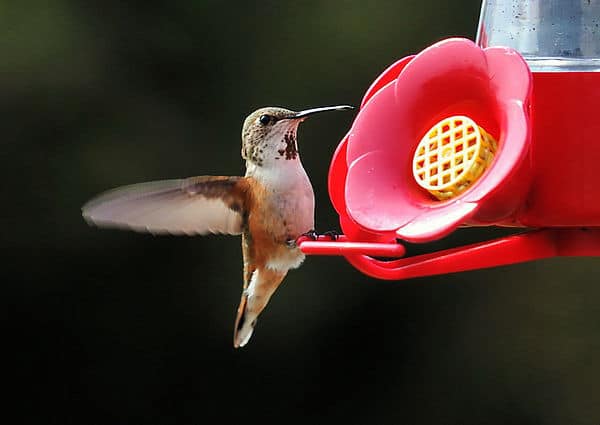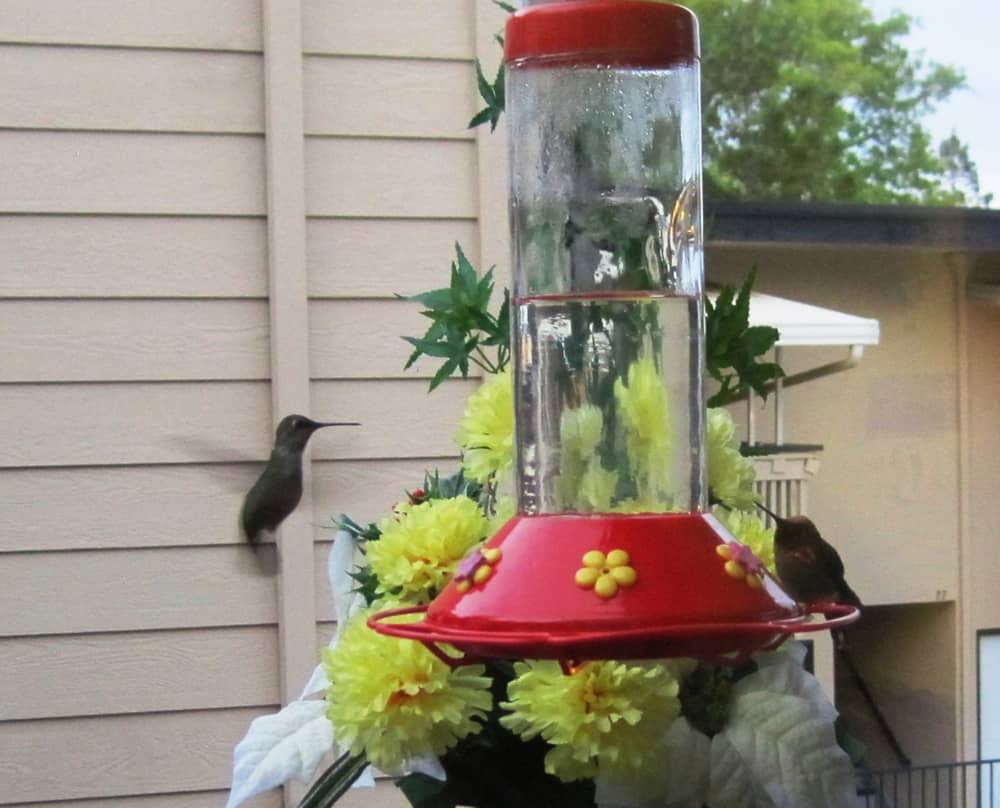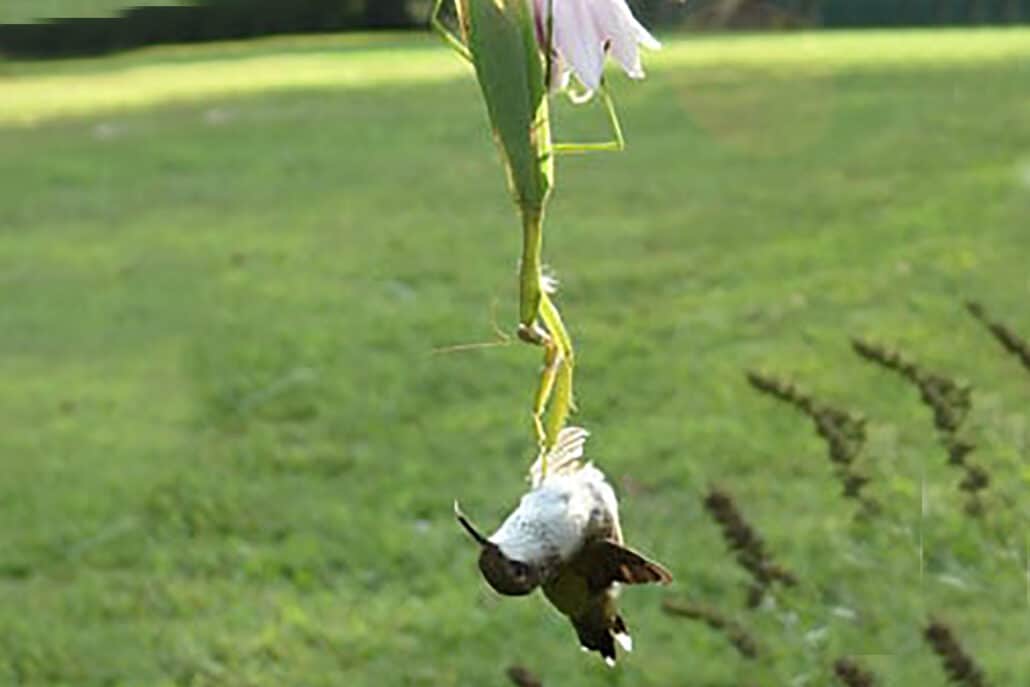First of all, keep the exterior of your nectar feeder clean. Depending upon the design of the feeder, bees might be feeding from drips and spills rather than from the feeding ports. Rinse or gently spray your full feeder with plain water immediately after you hang it, and occasionally between refills. If the outside of your feeder is sweet and sticky, it will draw bees.
Some nectar feeders are designed with removable (washable) plastic bee guards. Bee guards are usually red or yellow plastic mesh devices that fit over drinking ports. They don’t prevent bees from getting to the nectar, but they make it difficult.
Here’s another approach. Fill a jar lid with the same sugar-water solution you use to fill your nectar feeder, and place it below or within a few feet of your nectar feeder. Bees can more easily drink from a jar lid than from any hummingbird feeder, and will prefer to use it. Every night, when the bees are not using the jar lid, move it a few feet farther from your hummingbird feeder. Use the jar lid to attract the bees away from the feeder. Obviously, don’t move the bees to a place where children or pets play!
Here’s what NOT to do: Use pesticides to kill bees. Along with wasps and yellow jackets, honeybees are frequent visitors to hummingbird feeders. They are an important pollinator whose numbers are on the decline. Please do not use pesticides to kill bees—ever. It’s also not a good idea to use toxins anywhere near hummingbirds.
These methods aren’t fool proof, but should reduce the problem. Good luck!




